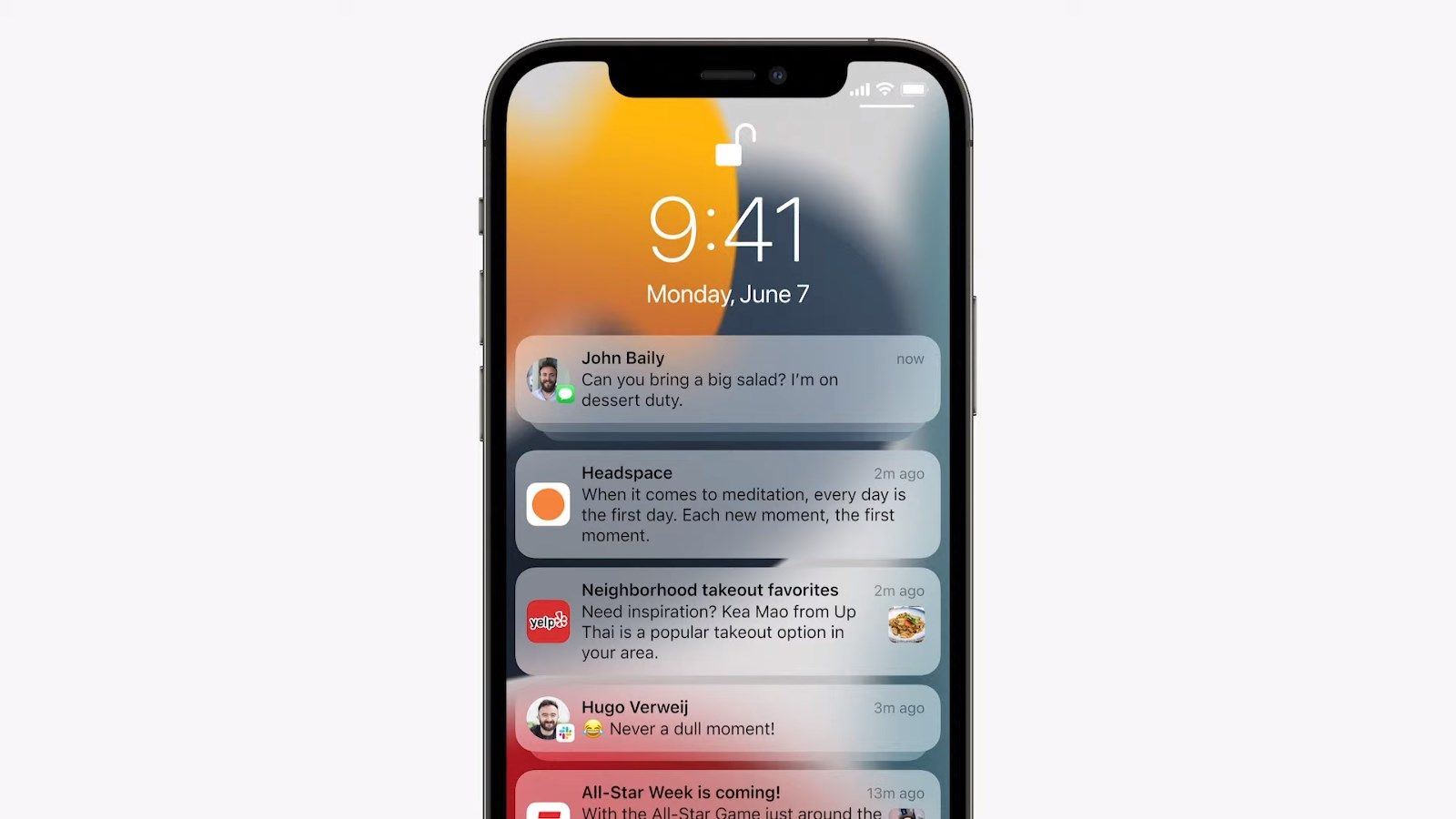Among the biggest complaints Android converts to iOS have (apart from the platform's lack of an intents system... and file management... and the price) is how Apple handles notifications. For a modern software system, they feel right out of 2011 in a lot of bad ways. Thankfully for anyone on team green considering the switch, Apple is making a handful of changes that should make them better — though probably still not quite as good as Android.
To start, notifications on iOS 15 will have a new and more compact appearance that wastes less space, so you can see more at a time. Messages from friends and calls will pull profile photos from your contacts, and app icons will also be larger so you can better see at a glance which apps are generating which notifications.
Notification summary on iOS 15.
In that vein, there's also a new notification summary that will be generated and give you a brief digest of what you've missed at pre-set times. The summary gives you an overview of your notifications by priority, from relevance to irrelevance, all based on machine learning, and it excludes notifications from actual people, like conversations or calls, sort of in its own take on Android 11's conversation-based notification priority system.
Tied to all of this is a bigger change to iOS's existing Do Not Disturb mode with what it calls "Focus." This new mode expands how Do Not Disturb works situationally, with schemas named for each Focus. They're things like Work and Sleep that can be enabled manually, but also suggested based on details like time and location that adjust how notifications and alerts are delivered. You can make custom ones as well.
Different Focuses will have different priorities for types of notifications, allowing through certain types at certain times, while holding others for you for later. So, if you want to avoid certain types of distractions like New York Times story notifications while working, but you're fine seeing important stories come in when you're at home, or if you want to keep work-related communications tied to the workday, that's all possible.
Of course, Android has custom scheduled do not disturb modes too with configurable settings for certain notification types, but this sounds like it will be automatic, more granular, and easier to set up. Plus, Focus also extends to other things, like home screen layout and widgets, allowing you to have a drastically different home screen appearance for different workflows — actually pretty handy.
Focus is cross-platform and synced across your devices, so if you enable a Work Focus on your phone, your mac will also switch into that mode. And, if automatic controls aren't your thing, you can manually whitelist apps as well.

